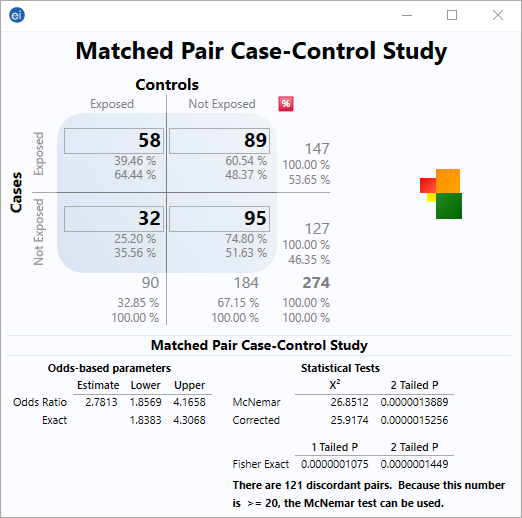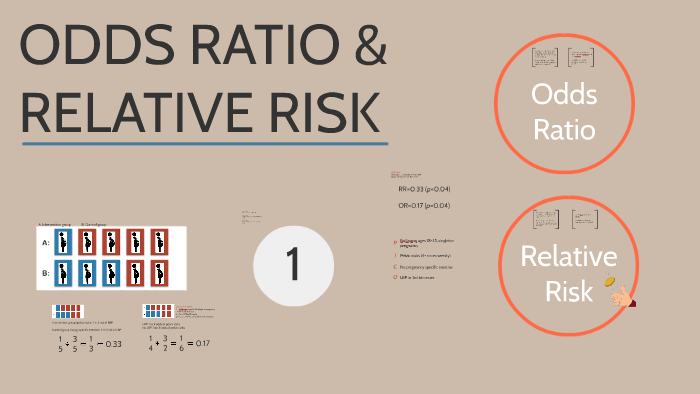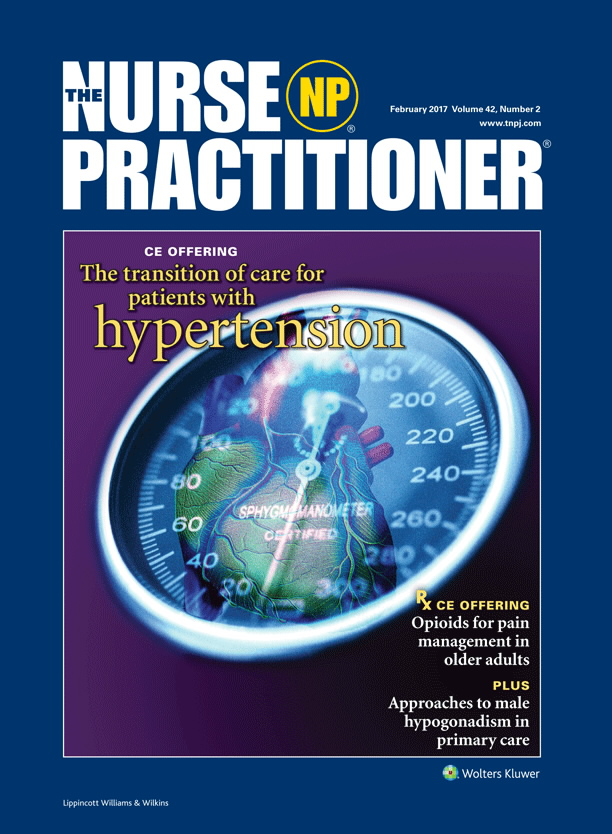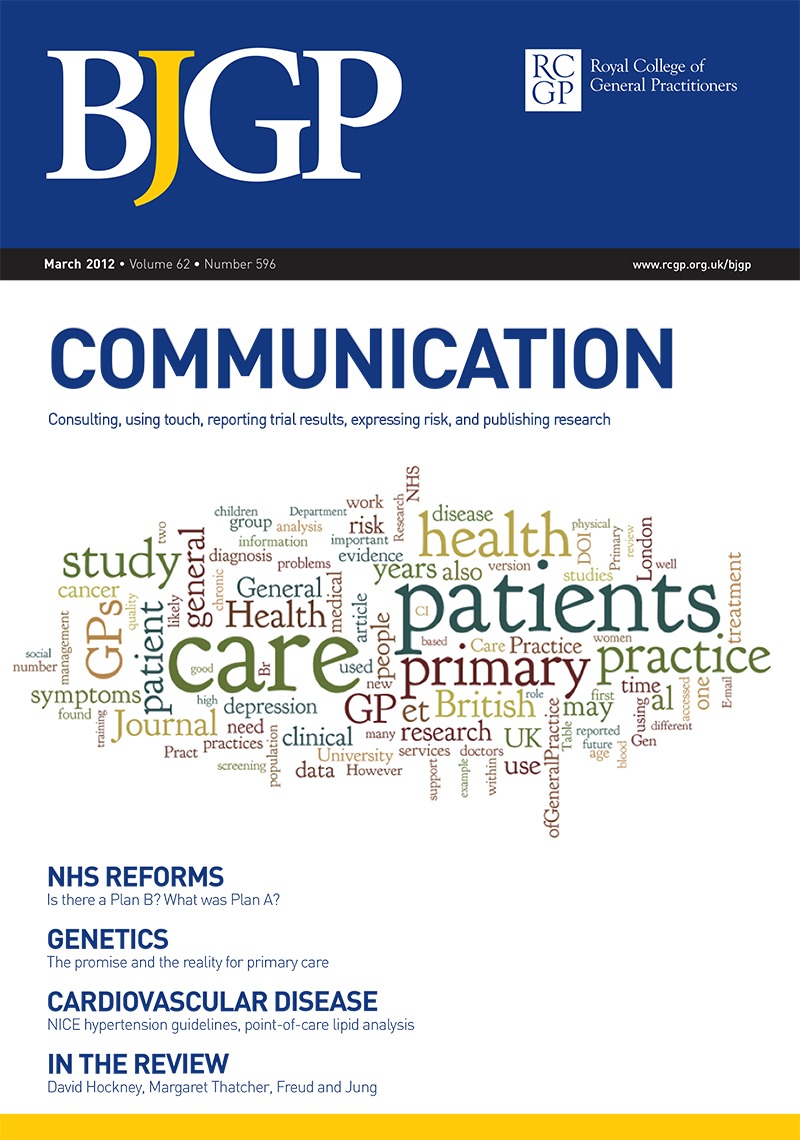It's hard to get out of bed to read about a whopping 063% reduction in absolute risk when you could be reading about a—wait for it—85% relative risk reduction!The relative risk and the odds ratio are measures of association between exposure status and disease outcome in a population Relative risk In epidemiology, relative risk (RR) can give us insights in how much more likely an exposed group is to develop a certain disease in comparison to a nonexposed group Once we know the exposure and disease status of a research population, Risk ratios, odds ratios, and hazard ratios are three ubiquitous statistical measures in clinical research, yet are often misused or misunderstood in their interpretation of a study's results A 01 paper looking at the use of odds ratios in obstetrics and gynecology research reported 26% of studies (N = 151) misinterpreted odds ratios as risk ratios , while a

266 Questions With Answers In Odds Ratio Science Topic
Which is better odds ratio or relative risk
Which is better odds ratio or relative risk-Results When risk was used as the measure of disease frequency, the summary risk ratio was 0 (95% CI = ), a 18% decrease in risk of infection When odds were used as the measure of disease frequency and the summary odds ratio was 041 (95% CI = 084), a 59% decrease in odds of infection Conclusions and clinical importanceThis video will introduce you to odds ratio (OR) vs relative risk (RR) This video will explain the concepts and calculation of odds ratio (OR) vs relative risk (RR) and its interpretation in research results Reference Panczyk, M (, July 23) E²ect size odds ratio (OR) vs relative risk




How To Interpret And Use A Relative Risk And An Odds Ratio Youtube
Definition of risk ratio A risk ratio (RR), also called relative risk, compares the risk of a health event (disease, injury, risk factor, or death) among one group with the risk among another group It does so by dividing the risk (incidence proportion, attack rate) in group 1 by the risk (incidence proportion, attack rate) in group 2Many healthrelated studies express results in terms of the Odds Ratio (OR), a frequentlymisunderstood statistic that resembles but differs from the RelativOdds ratios (OR) are commonly reported in the medical literature as the measure of association between exposure and outcome However, it is relative risk that people more intuitively understand as a measure of association Relative risk can be directly determined in a cohort study by calculating a risk ratio (RR)
Relative Risk, Odds, and Fisher's exact test I) Relative Risk A) Simply, relative risk is the ratio of p 1/p 2 For instance, suppose we wanted to take another look at our Seat belt safety data from Florida Safety equipment Injury in use Fatal Nonfatal Total None 1,601 165,527 167,128 Seat belt 510 412,368 412,878This includes the odds ratio, relative risk and risk difference We'll discussing mostly confidence intervals in this module and will develop the delta method, the tool used to create these confidence intervals After you've watched the videos and tried the homework, take a crack at the quiz! Risk ratios At a minimum, the only change that needs to be done to get risk ratios is to change the link function that relates the mean value of the response variable to the linear predictor For estimates of odds ratios, this is logit (ie the logarithm of the odds of the mean);
For estimates of relative risk ratios, this becomes logarithmThe relative risk is different from the odds ratio, although the odds ratio asymptotically approaches the relative risk for small probabilities of outcomesIf IE is substantially smaller than IN, then IE/(IE IN) IE/IN Similarly, if CE is much smaller than CN, then CE/(CN CE) CE/CN Thus, under the rare disease assumption = () () = In practice the odds ratio is commonly used forIe, having the control condition appear in each ratio's denominator To conform to this standard, code the variables so that the Experimental, Died count is in the




Matched Pair Case Control Statcalc User Guide Support Epi Info Cdc




A Beginner S Guide To Interpreting Odds Ratios Confidence Intervals And P Values Students 4 Best Evidence
When the disease is rare, the odds ratio will be a very good approximation of the relative risk The more common the disease, the larger is the gap between odds ratio and relative risk In our example above, p wine and p no_wine were 0009 and 0012 respectively, so the odds ratio was a good approximation of the relative risk OR = 0752 and RR The homemade video abstract on the BMJ website shows you the difference between odds and risk, and how one odds ratio can mean several different relative risks (RRs), depending on the risk in one of the groups Unfortunately, in some situations, you just have to get an OR, notably logistic regression and retrospective casecontrol studiesPute either the odds ratio or the relative risk to answer this question The odds ratio compares the relative odds of death in each group For women, the odds were exactly 2 to 1 against dying (154/308 05) For men, the odds were almost 5 to 1 in favor of death (709/142 4993) The odds ratio is 9986 (4993/05) There is a 10fold greater




Event Based Measures Of Effect Size Asha Journals Academy




Estimation Of Absolute Risk Of Colorectal Cancer Based On Healthy Lifestyle Genetic Risk And Colonoscopy Status In A Population Based Study Gastroenterology
Relative Risk Vs Odds Ratio on the Backpack and Back Pain Study Some researchers report relative risk (RR) and odds ratio (OR) when comparing two groups' outcome after they were exposed to a risk factor While these concepts can help us make better sense of risk assessment, some people can confuse both terms Percent increase = (Risk Ratio lower bound – 1) x 100 Percent decrease = (1 – Risk Ratio upper bound) x 100 It's worth stating again when comparing two proportions close to 1 or 0, the risk ratio is usually a better summary than the raw difference Odds Ratios We now turn to odds ratios as yet another way to summarize a 2 x 2 table Definition The Odds Ratio is a measure of association which compares the odds of disease of those exposed to the odds of disease those unexposed Formulae OR = (odds of disease in exposed) / (odds of disease in the nonexposed) Example I often think food poisoning is a good scenario to consider when interpretting ORs Imagine a group of friends went out to



Studying Studies Part I Relative Risk Vs Absolute Risk Peter Attia




Introduction To 2 X 2 Tables Epidemiologic Study Design And Measures Of Association Foundations Of Epidemiology
Odds Ratio, Hazard Ratio and Relative Risk Janez Stare1 Delphine MaucortBoulch2 Abstract Odds ratio (OR) is a statistic commonly encountered in professional or scientific medical literature Most readers perceive it as relative risk (RR), although most of them do not know why that would be true But since such perception is mostlyRealRisk works with any study which investigates the link between a risk factor or intervention and an outcome of interest, which also reports one of the following a relative risk (RR), hazard ratio (HR), odds ratio (OR) or a percentage change The study can be observational or experimental in design The terminology used can vary – so don't be put off if the terms 'risk factor' and The odds ratio will be greater than the relative risk if the relative risk is greater than one and less than the relative risk otherwise In the example above, if the adjusted odds ratio were interpreted as a relative risk, it would suggest that the risk of antibiotic associated diarrhoea is reduced by 75% for the intervention relative to the




Estimation Of Absolute Risk Of Colorectal Cancer Based On Healthy Lifestyle Genetic Risk And Colonoscopy Status In A Population Based Study Gastroenterology




Odds Ratio And Relative Risk Youtube
See all my videos at https//wwwzstatisticscom/videos/Health Stats IQ playlisthttps//youtubecom/playlist?list=PLTNMv857s9WUI5YsQMW14trmbopjZMWPa000 IntBoth the odds ratio and the relative risk compare the relative likelihood of an event occurring between two groups The relative risk is easier to interpret and is consistent with general intuition Some designs, however, allow only for the calculation of the oddsThe quote surely just means to say that the odds ratio is a relative risk measure rather than an estimate of the relative risk, which as already point out is only approximately the case in cohort studies/randomized trials for very low proportions By relative risk measure I mean something that is given relative to some comparison group in a way that the absolute difference depends on the




Calculating The Risk Ratio Odds Ratio And Risk Difference In A Randomised Controlled Trial Youtube




Effect Size Odds Ratio Or Vs Relative Risk Rr Youtube
Standard reporting practice is to report the odds ratio in terms of the incidence of the adverse event (death), and both the odds and risk ratios relative to the control condition; Risk Ratio vs Odds Ratio Whereas RR can be interpreted in a straightforward way, OR can not A RR of 3 means the risk of an outcome is increased threefold A RR of 05 means the risk is cut in half But an OR of 3 doesn't mean the risk is threefold; The odds ratio is the ratio of two odds ODDS RATIO Odds Ratio = Odds of Event A / Odds of Event B For example, we could calculate the odds ratio between picking a red ball and a green ball The probability of picking a red ball is 4/5 = 08 The odds of picking a red ball are (08) / 1(08) = 08 / 02 = 4 The odds ratio for picking a red



Http Www Floppybunny Org Robin Web Virtualclassroom Stats Basics Part13 Risks Rates Odds Pdf




How To Calculate Relative Risk 3 Steps With Pictures Wikihow
Odds ratio vs risk ratio You know the difference between risk and odds A risk is the proportion of subjects with an event in a total group of susceptible subjects Thus, we can calculate the risk of having a heart attack among smokers (infarcted smokers divided by the total number of smokers) and among nonsmokers (the same, but with non Odds ratio and relative riskIn this example (Figure 3), the relative risk reduction is 85% And, with this particular example, the absolute risk reduction is 063%




What Is An Odds Ratio And How Do I Interpret It Critical Appraisal




Interpreting Odds Ratios And Relative Risk Youtube
If the relative risk is 1, the tutoring made no difference at all If it's above 1, then the tutored group actually had a higher risk of failing than the controls Odds Ratio The odds ratio is the ratio of the odds of an event in the Treatment group to the odds Relative risks and odds ratios are widely reported in the medical literature, but can be very difficult to understand We sought to further clarify these important indices Methods We illustrated both relative risks and odds ratios using bar charts, then looked at the types of study for which each statistic is suitedNotice that the adjusted relative risk and adjusted odds ratio, 144 and 152, are not equal to the unadjusted or crude relative risk and odds ratio, 178 and 193 The adjustment for age produces estimates of the relative risk and odds ratio that are much closer to the stratumspecific estimates (the adjusted estimates are weighted averages of




Interpreting Odds Ratio Senguptas Research Academy




Relative Risk Odds Risk Ratio Video Youtube
Relative risk, odds, odds ratio, and others The concept and method of calculation are explained for each of these in simple terms and with the help of examples The interpretation of each is presented in plain English rather than in technical language Clinically useful notes are provided,"Odds" and "Risk" are the most common terms which are used as measures of association between variables In this article, which is the fourth in the series of common pitfalls in statistical analysis, we explain the meaning of risk and odds and the difference between the twoRelative Risk and Odds Ratio for the obese 3) Overall, you can see that decreasing the baseline incidence will decrease the odds ratio (300 in those who are nonobese versus 129 in those who are obese) Obviously, these results run counter to expected results, putting the onus on the researcher to justify them Similarly, you should find



Studying Studies Part I Relative Risk Vs Absolute Risk Peter Attia




Tutorial About Hazard Ratios Students 4 Best Evidence
The odds ratio (OR) is the ratio of the odds of cancer in smokers to the odds of cancer in nonsmokers OR = (a/b)/ (c/d) = (ad)/ (bc) The risk ratio (RR), also called the relative risk, is the ratio of the probability of cancer in smokers to the probability of cancer in nonsmokers Given that you know a, b, c, and d, you can compute either of The risk or odds ratio is the risk or odds in the exposed group divided by the risk or odds in the control group A risk or odds ratio = 1 indicates no difference between the groups A risk or odds ratio > 1 indicates a heightened probability of the outcome in the treatment group The two metrics track each other, but are not equalRelative Risk (RR) is a ratio of probabilities or put another way it is one probability divided by another Odds Ratio (OR) is a ratio or proportion of odds I just remember that odds ratio is a ratio of odds and probability isn't a ratio of odds (AKA it is the other option) Relative Risk = Probability / Probability




A Beginner S Guide To Interpreting Odds Ratios Confidence Intervals And P Values Students 4 Best Evidence




Relative Risk Odds Ratio And Rate Ratio Youtube
In clinical studies, as well as in some other settings, the parameter of greatest interest is often the relative risk rather than the odds ratio The relative risk is best estimated using a population sample, but if the rare disease assumption holds, the odds ratio is a good approximation to the relative risk — the odds is p / (1 − p), so when p moves towards zero, 1 − p moves towards 1Rather the odds is threefold greater Interpretation of an OR must be in terms of odds, not INTRODUCTION Odds ratio (OR) and risk ratio (RR) are two commonly used measures of association reported in research studies In crosssectional studies, the odds ratio is also referred to as the prevalence odds ratio (POR) when prevalent cases are included, and, instead of the RR, the prevalence ratio (PR) is calculated




A Practical Overview Of Case Control Studies In Clinical Practice Chest




266 Questions With Answers In Odds Ratio Science Topic
Risk difference This study addresses the measures of effect, that is, the measures that are used to compare the frequency of disease (or other outcome) between two groups The measures of effect are generally expressed as relative risks and odds ratios (OR) (relative measures of effect) or as risk differenceSometimes, we see the log odds ratio instead of the odds ratio The log OR comparing women to men is log(144) = 036 The log OR comparing men to women is log(069) = 036 log OR > 0 increased risk log OR = 0 no difference in risk log OR < 0 decreased risk Odds Ratio 0 5 10 15 More on the Odds Ratio Log Odds Ratio4 2 0 2 4 Even with initial risks as high as 50% and very large reductions in this risk (odds ratios of about 01), the odds ratio is only 50% smaller than the relative risk (01 for the odds ratio compared with a true value for the relative risk of 02)




Relative Risk Vs Odds Ratio Youtube




Odds Ratios And Risk Ratios Youtube
Odds ratio vs relative risk Odds ratios and relative risks are interpreted in much the same way and if and are much less than and then the odds ratio will be almost the same as the relative risk In some sense the relative risk is a more intuitive measure of effect size



Full Article How Big Is A Big Odds Ratio Interpreting The Magnitudes Of Odds Ratios In Epidemiological Studies




Odds Ratio Relative Risk Risk Difference Statistics Tutorial 30 Marinstatslectures Youtube Study Skills Statistics Tutorial




Interpretation Of Odds Ratio And Fisher S Exact Test By Sergen Cansiz Towards Data Science



Ctspedia Ctspedia Oddsrisk




Chapter 6 Choosing Effect Measures And Computing Estimates Of Effect Cochrane Training




Relative Risk Odds Ratios Youtube




Against All Odds Improving The Understanding Of Risk Reporting British Journal Of General Practice




Odds Ratio Relative Risk By Susi Delaney On Prezi Next




Relative Risk Odds Ratio And Risk Difference Aka Attributable Risk In R R Tutorial 4 8 Youtube Linear Regression Regression Data Science




Relative Risk Vs Odds Ratio Extensive Video Youtube



Definition And Calculation Of Odds Ratio Relative Risk Stomp On Step1




Odds Ratio Relative Risk Risk Difference With R R Tutorial 4 11 Marinstatslectures Youtube




A Practical Overview Of Case Control Studies In Clinical Practice Chest




Reporting The Findings Absolute Vs Relative Risk Center For Health Journalism




Stratified Tables Statcalc User Guide Support Epi Info Cdc




266 Questions With Answers In Odds Ratio Science Topic




266 Questions With Answers In Odds Ratio Science Topic




High Levels Of Coagulation Factor Xi As A Risk Factor For Venous Thrombosis Nejm




Interpreting Odds Ratios And Relative Risk Youtube




Relative Risk And Odds Ratio Youtube




Interpreting Measures Of Risk Translating Evidence Into Practice Article Nursingcenter




Odds Ratio Relative Risk Risk Difference Statistics Tutorial 30 Marinstatslectures Youtube



Estimating Relative Risk The Odds Ratio And Attributable Risk Applied Statistics In Healthcare Research




Relative Risk And Odds Ratio Usmle The Journey




Odds Ratio Relative Risk Calculation Definition Probability Odds Youtube




Biostatistics Odd Ratio Vs Relative Risk Youtube




What Is An Odds Ratio And How Do I Interpret It Critical Appraisal



Studying Studies Part I Relative Risk Vs Absolute Risk Peter Attia




Converting An Odds Ratio To A Range Of Plausible Relative Risks For Better Communication Of Research Findings The Bmj



Studying Studies Part I Relative Risk Vs Absolute Risk Peter Attia




Calculating Rr Versus Or Youtube



Interpretation Of Odds Ratio And Fisher S Exact Test By Sergen Cansiz Towards Data Science




When Can Odds Ratios Mislead The Bmj




Relative Risks And Odds Ratios What S The Difference Mdedge Family Medicine




Odds Ratios And Risk Ratios Youtube




How To Interpret And Use A Relative Risk And An Odds Ratio Youtube




Relative Risks Odds And Risk Ratios 2 2 Table Youtube




Odds Ratio Relative Risk Epidemiology Statistics Tutorial Student Evaluate Treatments Youtube




Odds Ratios And Risk Ratios Youtube




Calculating The Risk Ratio Odds Ratio And Risk Difference In A Randomised Controlled Trial Youtube




Relative Risk And Absolute Risk Definition And Examples Statistics How To




Nccmt Ure Relative Risk It S Easy To Calculate And Interpret Youtube




Odds Ratio Relative Risk Risk Difference Statistics Tutorial 30 Marinstatslectures Youtube




Odds Ratio Relative Risk Risk Difference Statistics Tutorial 30 Marinstatslectures Youtube




Risk Risk Difference Relative Risk Youtube




How To Calculate Relative Risk 3 Steps With Pictures Wikihow



1




Odds Ratios And Risk Ratios Youtube




How To Calculate Relative Risk 3 Steps With Pictures Wikihow




The Difference Between Relative Risk And Odds Ratios The Analysis Factor




Definition And Calculation Of Odds Ratio Relative Risk Stomp On Step1




Definition And Calculation Of Odds Ratio Relative Risk Stomp On Step1



Http Www Floppybunny Org Robin Web Virtualclassroom Stats Basics Part13 Risks Rates Odds Pdf




Diagnostic Odds Ratio Wikipedia




Against All Odds Improving The Understanding Of Risk Reporting British Journal Of General Practice




Odds Ratio Relative Risk Risk Difference Statistics Tutorial 30 Marinstatslectures Youtube




Odds Ratio Relative Risk Risk Difference Statistics Tutorial 30 Marinstatslectures Youtube




Setting Number Of Decimal Places For Reporting Risk Ratios Rule Of Four The Bmj




Converting An Odds Ratio To A Range Of Plausible Relative Risks For Better Communication Of Research Findings The Bmj




Odds Ratio Relative Risk Epidemiology Statistics Tutorial Student Evaluate Treatments Youtube








Using Odds Ratio In Case Control Studies Youtube Case Control Study Study Teaching




How To Calculate An Odds Ratio Youtube



Estimating Relative Risk The Odds Ratio And Attributable Risk Applied Statistics In Healthcare Research




Hazard Ratio Definition



Interpretation Of Odds Ratio And Fisher S Exact Test By Sergen Cansiz Towards Data Science



Q Tbn And9gcr Ttka12jaocnx Gn3ox9ci1ggq18vcw9359i6hq2cschyusam Usqp Cau




Nccmt Ure Relative Risk It S Easy To Calculate And Interpret Youtube




Odds Ratios And Risk Ratios Youtube



1



Http Www Floppybunny Org Robin Web Virtualclassroom Stats Basics Part13 Risks Rates Odds Pdf




Interpretation Of Odds Ratio And Fisher S Exact Test By Sergen Cansiz Towards Data Science




How To Calculate Relative Risk 3 Steps With Pictures Wikihow



1




Odds Ratios And Risk Ratios Youtube




Reporting The Findings Absolute Vs Relative Risk Center For Health Journalism




Relative Risk Versus Odds Ratio Usmle Biostatistics 4 Youtube




Overestimation Of Risk Ratios By Odds Ratios In Trials And Cohort Studies Alternatives To Logistic Regression Cmaj




When Can Odds Ratios Mislead The Bmj




Calculation And Interpretation Of Odds Ratio Or And Risk Ratio Rr Youtube



No comments:
Post a Comment